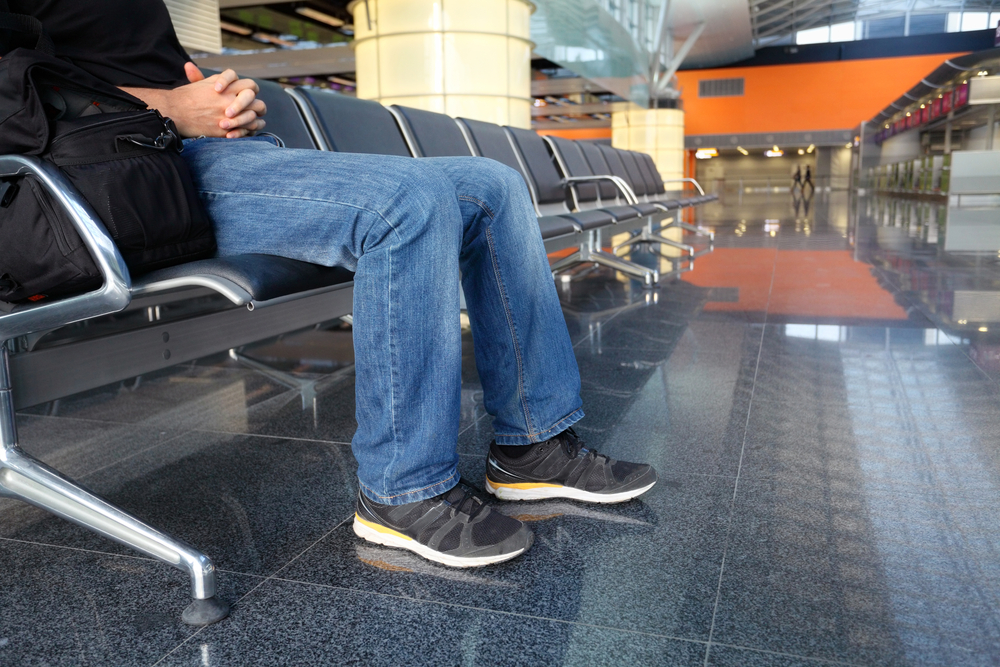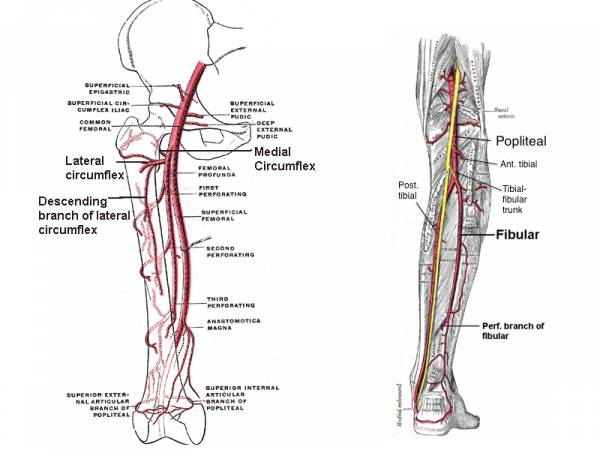Sit Much less and Prioritize Motion for Lengthy-Time period Health

Making a long-term plan for motion and well being generally is a bit daunting. There’s a lot data out there at present that many individuals simply don’t know the place to begin. What do you have to prioritize? Must you be going operating or lifting weights? And what number of occasions every week do you have to prepare?
These questions turn out to be more and more vital as we become older and there are larger calls for on our time. Nonetheless, it’s at all times price remembering that the long-term advantages of prioritizing well being and motion are enormous. Sure, leaving work thirty minutes earlier to stroll house would possibly make you are feeling responsible due to the emails you didn’t reply to; nonetheless, people who find themselves extra energetic have larger well-being, are extra productive at work, and have more healthy youngsters.1, 2, 3
A Easy Answer
With that and a myriad of different well being advantages in thoughts, I concocted the nice upside-down motion pyramid as a means that can assist you prioritize your method to raised motion.
The nice upside-down motion pyramid.
Over the following few weeks I’ll current a progressive plan detailing why it is best to sit much less, stroll extra, transfer stuff, transfer actually shortly, and transfer for a protracted time period, in that order of significance. Every stage of the plan will construct on the primary so as to add layers of further motion to your week, however provide you with time to place every stage into observe. As earlier than – when you’re not managing to do the extent above, don’t do the extent under. In spite of everything, you’ve received to face earlier than you may stroll.
Sit Much less
In case you hadn’t heard, sitting is the brand new smoking.4 This may occasionally sound melodramatic (in spite of everything, all of us have to sit down), however by way of the consequences on our total well being, there’s fact to it. For instance, a current meta-analysis discovered a 5% enhance within the threat of dying (total mortality) for each further hour spent sitting per day – after taking bodily exercise under consideration.5 If we flip this round, individuals who spend extra time standing additionally seem to have a diminished total mortality.6
“Extended durations of sitting can negatively have an effect on the way in which the arterial wall capabilities, which is immediately related to atherosclerosis and heart problems.”
Nonetheless, out in the actual world, we regularly want to sit down to work. Though standing desks have turn out to be more and more common, it’s vital to notice this will not be significantly better. Standing at a desk doesn’t stop you from being hunched over a display screen, and extended durations of standing in a single place can even trigger issues like varicose veins and again ache.17,18
So What Ought to We Do?
As you’re in all probability studying this to procrastinate while at work, let’s do the recommendation bit first, and people who have an interest can stick round for the science on the finish.
Throughout your commute: In case you use public transport, don’t take that seat. You don’t want it. You possibly can even take it up a notch by minimizing using assist rails. Sure, you’ll look foolish browsing the bus, nevertheless it’s surprisingly enjoyable!
At work:
- Stand (or stroll) when you take cellphone calls or if you should suppose.
- Go and discover that colleague relatively than sending her or him an electronic mail. You’re more likely to get a optimistic response, and you could even make a buddy.
- Relocate for lunch. Higher but – take it outdoors.
- When sitting, transfer place steadily, or (quietly) faucet your ft to get your blood transferring.
- Rise up recurrently, or at the least as soon as an hour. Do a lap of the workplace, pop outdoors, or take the steps. Want reminding? Loads of free apps and packages can be found to nudge you out of your chair.
- Received like-minded colleagues? Stick a pull-up bar in your workplace door and do a few reps as you go out and in.

As an alternative of staying within the workplace, head outdoors for a stroll to compensate for calls and texts.
At house:
- It’s okay to chill out after a protracted day, however strive to not instantly slip right into a coma on the couch, solely to reappear simply earlier than mattress time.
- Maintain getting up, or at the least transfer place recurrently.
- Do just a few push ups throughout TV advert breaks. Irrespective of what number of occasions they beneficial this in health magazines, I’m nonetheless unsure anyone does it.
- Do your ironing and different chores when you’re catching up on Britain’s Received Expertise and Greatest Loser. That will provide you with extra time to get pleasure from your weekends.
- The minutes simply earlier than and after dinner are a good time to stand up, or get out of the home for a fast stroll.
The true ethical of the story is to concentrate on minimizing the period of time you spend in a single place, relatively than to demonise sitting particularly.
What’s the Deal With Sitting?
If we need to dig into why sitting is so unhealthy for our well being, three totally different (and nearly actually related) mechanisms are vital – irritation, insulin resistance, and blood circulate.
“After we’re speaking about heart problems (comparable to coronary heart assaults and strokes), the massive downside stems from atherosclerosis – calcified ‘plaques’ that construct up within the partitions of our arteries.”
Whereas everyone was apprehensive about ldl cholesterol, the position of irritation and insulin resistance within the growth of coronary heart illness, weight problems, type-2 diabetes, and lots of cancers flew below the radar for many years. Nonetheless, we’re now seeing that markers of irritation predict the danger of coronary heart illness higher than ldl cholesterol, and in case your insulin ranges are low (indicating a excessive insulin sensitivity), then your levels of cholesterol turn out to be just about irrelevant.7,8,9,10
Why the random journey down biochemistry lane? As a result of irritation, insulin, and insulin resistance all enhance with time spent sitting.11 Uh oh.
Are You Sitting Comfortably?
In actuality, we don’t have any proof that sitting immediately causes insulin resistance. Maybe people who find themselves insulin resistant all of a sudden have a want to sit down extra. It’s unlikely, however doable. Subsequently we have to have a look at different items within the puzzle, comparable to the way in which during which our blood circulate adjustments once we sit.
After we’re speaking about heart problems (comparable to coronary heart assaults and strokes), the massive downside stems from atherosclerosis – calcified “plaques” that construct up within the partitions of our arteries. These can rupture, inflicting a blockage. Alongside issues like irritation, the way in which during which blood flows by means of our arteries impacts the event of atherosclerosis. When the circulate is disturbed or redirected, it places additional stress on the arterial wall. This is the reason we see atherosclerosis construct up in locations like carotid arteries within the neck, as a result of the artery splits into two early on, with elevated turbulence on the break up level (also called the bifurcation).12 Nonetheless, your arteries want some stress so as to work correctly, and lowering circulate can have a detrimental impact on arterial operate.
After we sit, we bend on the hip and the knee, which reduces circulate within the femoral and popliteal arteries, respectively.13,14

Left: Femoral arteries; Proper: Popliteal arteries
Extended durations of sitting can negatively have an effect on the way in which the arterial wall capabilities, which is immediately related to atherosclerosis and heart problems.15 That change in circulate attributable to extended sitting is probably why these arteries within the legs are a typical place for atherosclerotic plaques to happen. We even see these patterns of atherosclerosis in 4,000 year-old Egyptian mummies!16 In case you have been vital sufficient to have your physique preserved, you in all probability received to spend so much extra time sitting in comparison with everyone else.
Begin With Your Day by day Routine
Conjecture about mummies apart, there’s good proof for minimizing your sitting time as a lot as doable. Attempt to work as lots of the concepts above into your every day routine. That may line you up completely up for the next move(s) to raised well being – strolling extra.
Extra Like This:
References:
1. Puig-Ribera et al.. Self-reported sitting time and bodily exercise: interactive associations with psychological well-being and productiveness in workplace staff. BMC Public Well being. 2015 Jan 31;15:72.
2. Sears et al.. Total well-being as a predictor of well being care, productiveness, and retention outcomes in a big employer. Popul Well being Manag. 2013 Dec;16(6):397-405.
3. Robinson et al.. A story literature overview of the event of weight problems in infancy and childhood. J Little one Well being Care. 2012 Dec;16(4):339-54.
4. Is sitting the brand new smoking? New science, previous behavior. Mayo Clin Well being Lett. 2014 Oct;32(10):4-5.
5. Chau et al.. Day by day sitting time and all-cause mortality: a meta-analysis. PLoS One. 2013 Nov 13;8(11):e80000.
6. van der Ploeg et al.. Standing time and all-cause mortality in a big cohort of Australian adults. Prev Med. 2014 Dec;69:187-91.
7. Ridker et al.. Relation of baseline high-sensitivity C-reactive protein stage to cardiovascular outcomes with rosuvastatin within the Justification for Use of statins in Prevention: an Intervention Trial Evaluating Rosuvastatin (JUPITER). Am J Cardiol. 2010 Jul 15;106(2):204-9.
8. Yanase et al.. Insulin resistance and fasting hyperinsulinemia are threat elements for brand new cardiovascular occasions in sufferers with prior coronary artery illness and regular glucose tolerance. Circ J. 2004 Jan;68(1):47-52.
9. Després et al.. Hyperinsulinemia as an unbiased threat issue for ischemic coronary heart illness. N Engl J Med. 1996 Apr 11;334(15):952-7.
10. Bartnik et al.. Irregular glucose tolerance–a typical threat think about sufferers with acute myocardial infarction as compared with population-based controls. J Intern Med. 2004 Oct;256(4):288-97.
11. León-Latre et al.. Sedentary way of life and its relation to cardiovascular threat elements, insulin resistance and inflammatory profile. Rev Esp Cardiol (Engl Ed). 2014 Jun;67(6):449-55.
12. Chiu and Chien. Results of disturbed circulate on vascular endothelium: pathophysiological foundation and scientific views. Physiol Rev. 2011 Jan;91(1):327-87.
13. Schlager et al.. Wall shear stress within the superficial femoral artery of wholesome adults and its response to postural adjustments and train. Eur J Vasc Endovasc Surg. 2011 Jun;41(6):821-7.
14. Restaino et al.. Influence of extended sitting on decrease and higher limb micro- and macrovascular dilator operate. Exp Physiol. 2015 Jul 1;100(7):829-38.
15. Bruno et al.. Intima media thickness, pulse wave velocity, and circulate mediated dilation. Cardiovasc Ultrasound. 2014 Aug 23;12:34.
16. Thompson et al.. Atherosclerosis throughout 4000 years of human historical past: the Horus examine of 4 historic populations. Lancet. 2013 Apr 6;381(9873):1211-22.
17. Pfisterer et al.. Pathogenesis of varicose veins – classes from biomechanics. Vasa. 2014 Mar;43(2):88-99.
18. McCulloch et al.. Well being dangers related to extended standing. Work. 2002;19(2):201-5.
Photograph 1 courtesy of Shutterstock.
Photograph 2 by Häggström, Mikael. “Medical gallery of Mikael Häggström 2014”. Wikiversity Journal of Drugs 1 (2). DOI:10.15347/wjm/2014.008. ISSN 20018762. (Picture:Gray548.png) [Public domain], through Wikimedia Commons.
Photograph 3 by Bakerstmd (Personal work) [CC BY-SA 4.0], through Wikimedia Commons.